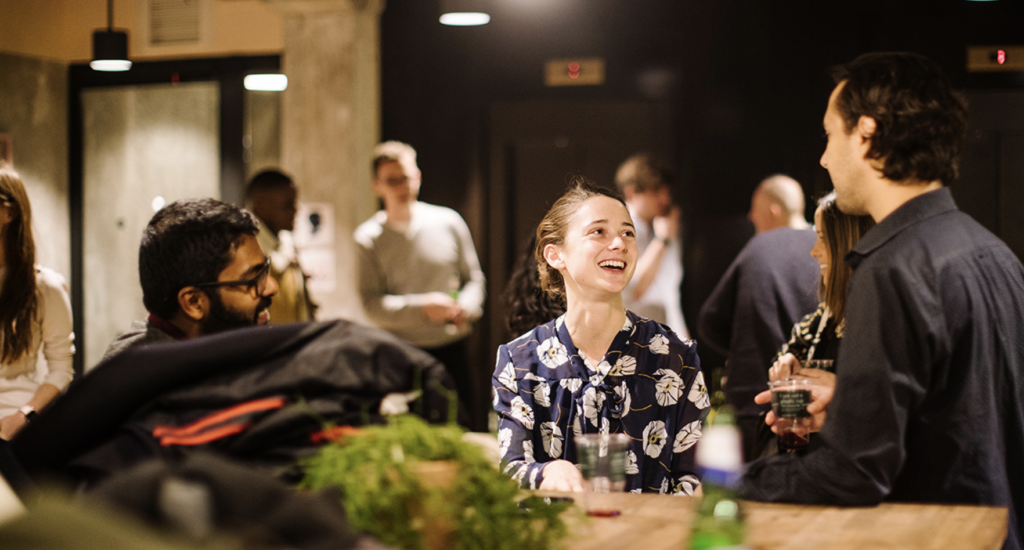What Alt Text Taught Me About the Human Side of SEO


When I first saw the BrightonSEO lineup, I did the usual: scanned through it, picked out the must-sees, and added them to my schedule.
These were:
The Convergence of AI and UX? I love a bit of UX and AI chat, I’ll go to that.
Mindset-Based Targeting: Achieving 5x More with 5x Less Content? I’m all about efficiency, add that to the list.
From 0 to 30 Million Visits per Month? Defo adding that. If I can get my clients that kind of traffic boost, surely I’ll get a pay rise, right, Tom?
Hmm… What the F is Alt Text, and How Do You Write It? by Liam Cumber. I’m not sure how that one will make me a better SEO, it seems like a talk for beginners.
But the talk was sandwiched between two I really wanted to see on the main stage, and I figured I’d be knackered by the time those two were on, worn out from all the technical SEO deep-dives, software demos, and stuffing my Semrush tote bag with as many vendor-emblazoned t-shirts and water bottles as I could grab.
So I earmarked the talk for a chance to rest my legs and bide my time until Mark Williams-Cook enlightened me on the link between SEO and video games.
I’m now at BrightonSEO. I’ve attended the first day’s talks and, as predicted, I’ve got a bag full of swag and tired legs. But more importantly, I’ve left Thursday’s sessions with thought-provoking insights, clever takeaways, and fresh ideas for my clients. They all helped to inform, guide, and sharpen my skills. I didn’t expect any that day to hit me on a deeper level, to move me in ways I never thought an SEO conference could.
Then came that talk... the one I nearly skipped: What the F is Alt Text, and How Do You Write It?
This was meant to be the session where I switched off for a bit and slumped back into my chair. But instead, I sat up straighter. Not because I suddenly needed reminding of what an alt attribute is but because I was being asked to think about SEO not in terms of rankings, traffic, and performance, but in terms of people.
Liam wasn’t just talking about images missing descriptions. He was talking about people missing access.
He opened his talk by asking us to close our eyes. Then he began describing an image. And even though our eyes were shut, we could see the image. We knew exactly what he was describing, just from his words. Without that description, we’d have had no idea what we were supposed to be looking at. That’s what it’s like for so many people accessing the internet every day.
One in four people in the UK have a registered disability. One in four. It’s not a niche. It’s not rare. Accessibility could be for the person next to you or the client you’re building a site for. It is likely for the user on the other side of that landing page you’ve worked so hard to get ranking first in Google.
But accessibility isn’t just for the 1 in 4 with permanent disabilities. It’s for everyone. It’s for the person with a broken arm, the parent reading a webpage one-handed while holding a baby, and the commuter trying to navigate a site in bright sunlight. Accessible content benefits everyone.
Liam showed us an image of a colourful bouquet of flowers. If you could see, you saw it: bold, bright, beautiful. But the alt text? It just said the product name. That’s it. Nothing about the colours, the textures, the emotion it might evoke, just the product name. For someone relying on a screen reader, all that richness, all that context and care, was completely invisible.
It was a simple example, but it highlighted the problem so well. It wasn’t about technical know-how; it was about perspective.
Writing alt text isn’t difficult once you understand the bigger picture. It’s about being intentional and thoughtful in your approach. And that’s where Liam broke it down into two simple steps:
It’s not about describing every detail, it’s about choosing the right ones. And doing that means stepping into someone else’s experience: thinking about how they navigate the page and what they might miss if you don’t take the time to describe it well.
Liam’s talk taught me that the main thing you need to write good alt text is empathy. Not tools. Not plugins. Not AI generators. Empathy. Empathy to pause and ask: What does this image add to the page? What would a sighted person gain from it and how can I translate that experience, not just transcribe what’s literally there?
This brings me to the second of Liam’s key steps.
You’re not just saying what’s in the image; you’re capturing the meaning it brings in context. And that means the right alt text for the same image might change depending on where it sits, what surrounds it, and what the user is there to do.
As SEOs, we all understand the importance of alt text. We know it helps screen readers, improves accessibility scores, and gives Google more context for image results. But it’s often approached as a technical task, something to audit, optimise, and tick off the list. It’s not that we don’t care. It’s just that sometimes we’re so focused on seeing things through the lens of best practice, we forget to see them through the eyes of the people who rely on it.
It made me realise how easy it is to treat accessibility like a checkbox, a ticket you close without giving it much thought. But every missed alt tag isn’t just a missed SEO opportunity. It’s a missed opportunity for someone to experience the web.
When we skip alt text, we’re not just overlooking a field in the CMS. We’re overlooking people. People who rely on screen readers. People for whom a missing alt attribute isn’t just an oversight, it’s a barrier.
In a world so focused on data, traffic, and rankings, it’s easy to forget that behind every click, behind every search result, there’s a real person. Accessibility isn’t just another task on a to-do list, it’s about ensuring that all people can interact with the content we create, regardless of their circumstances.
I went to BrightonSEO for the latest strategies. But I left with something even more valuable: A reminder that the work we do matters beyond the metrics. That there’s always a human at the end of the click. And that the smallest things, like alt text, can make the biggest difference.
The next time I write alt text, I’ll remember that it’s not just a field to fill, but a meaningful act of inclusion.
If this resonated with you, I really recommend visiting Liam Cumber's page for more insights on accessibility done right, and if you're after more takeaways from BrightonSEO, Thomas’s blog is well worth a read.
Receive all the latest news, events, and insights on B2B tech, marketing, and communications with Clarity’s free monthly newsletter.
As a consultancy, our full-funnel marketing and communications solutions are designed to fearlessly deliver business results across multiple industries and service areas.

Looking for a partner to help you reach your goals? We’d love to hear from you.